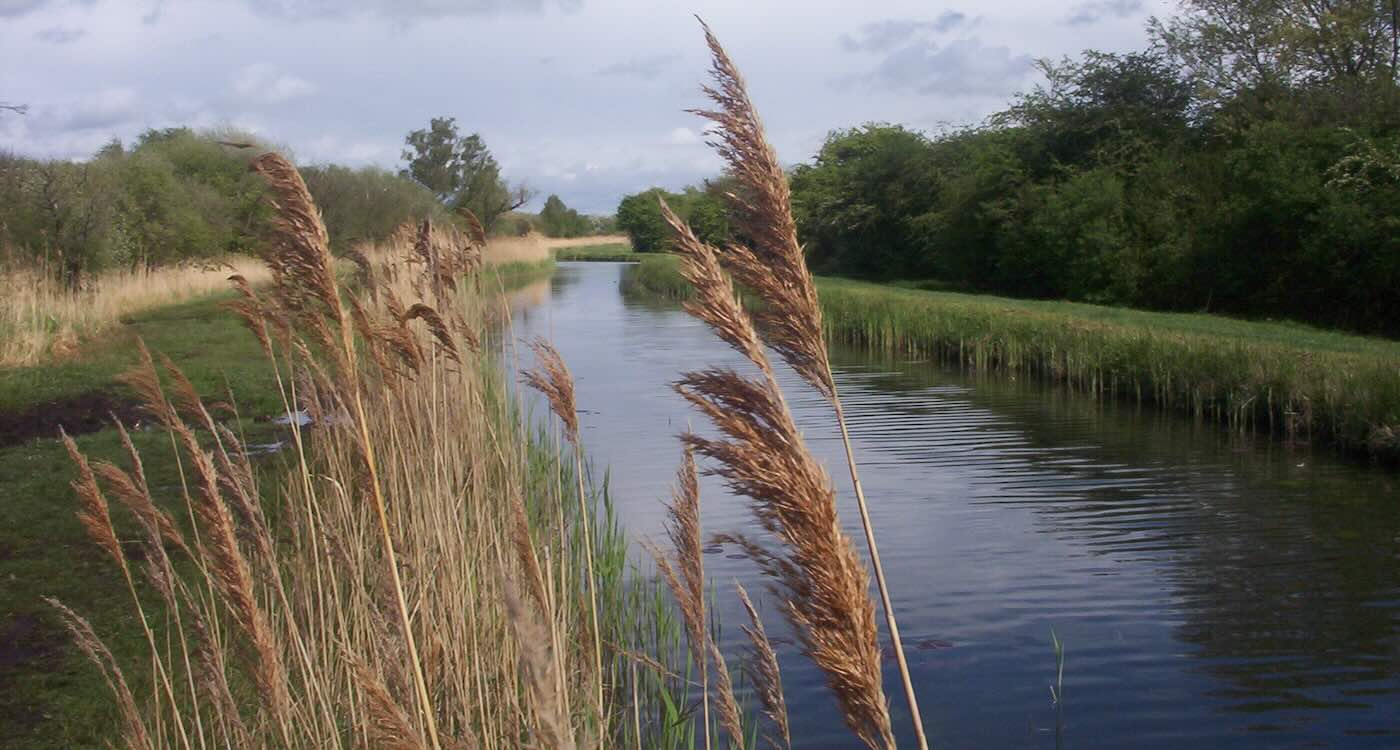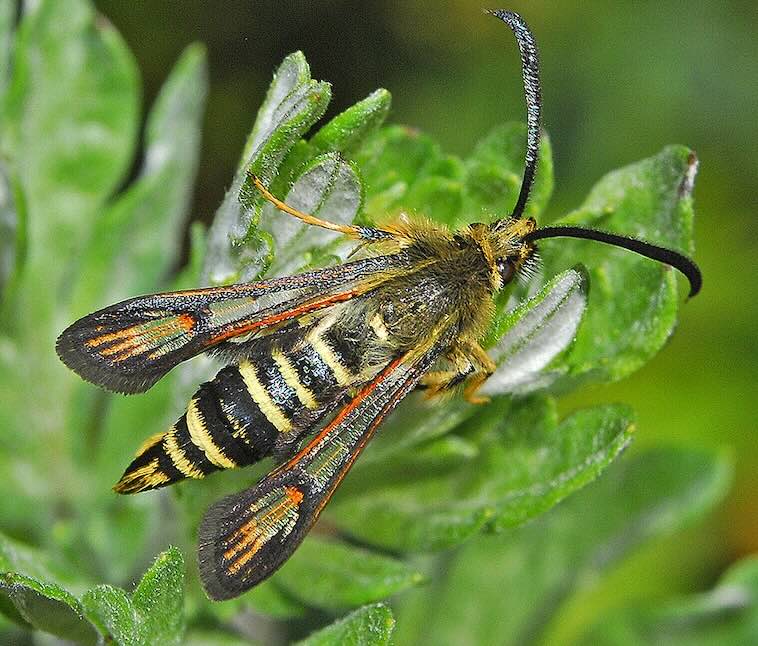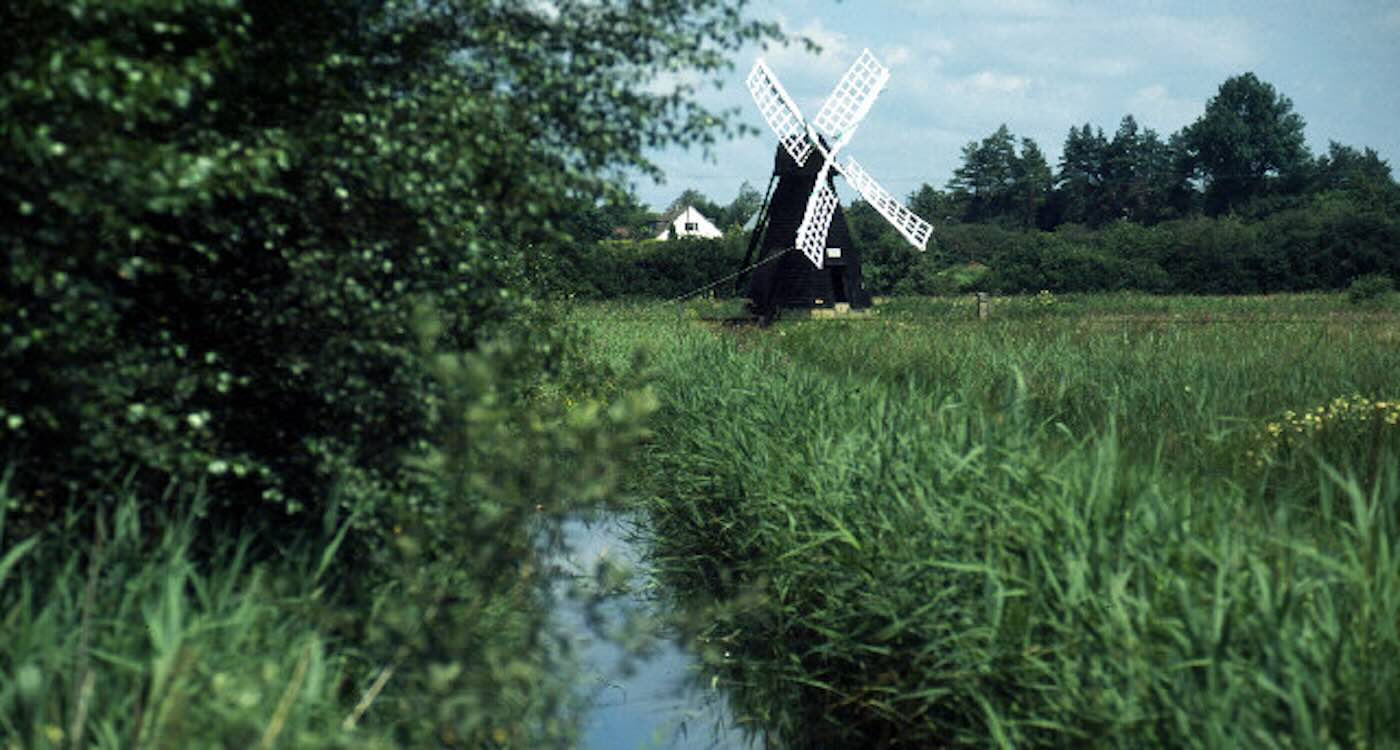 River at Wicken Fen National Nature Reserve, Cambridgeshire, England By Naturenet CC BY-SA 3.0
River at Wicken Fen National Nature Reserve, Cambridgeshire, England By Naturenet CC BY-SA 3.0
A nature reserve has become the first in UK to record 10,000 species, with the discovery of a unique moth that imitates a wasp.
The National Trust’s Wicken Fen, in Cambridgeshire, England, hit the total when a rare species of moth—the six-belted clearwing—was recorded on the reserve for the first time.
Named Bembecia ichneumoniformis, it has six yellow stripes on its black abdomen to mimic the appearance of a venomous wasp, which aids in warning off predators.
Recent finds at the National Nature Reserve include the formidable ant beetle, a scarce plant in the pea family called grass vetchling, and another moth—the evocatively-titled chamomile shark.
New bird records include a white-tailed eagle that roosted for one night in 2022 and a white stork that was seen several times in summer 2023.
“Reaching 10,000 recorded species is a proud achievement for everyone who has ever taken an interest in this special corner of the country,” said Alan Kell, a manager at the National Trust.
 Six-belted clearwing moth protects itself by looking like a wasp – Credit: Bembecia ichneumoniformis By Hectonichus (CC BY-SA 4.0)
Six-belted clearwing moth protects itself by looking like a wasp – Credit: Bembecia ichneumoniformis By Hectonichus (CC BY-SA 4.0)
When the UK conservation charity National Trust bought Wicken Fen in 1899—for a paltry £10 ($15)— it was only two acres in size. But the nonprofit has spent 126 years expanding and caring for it, created a wildlife haven covering 2,026 acres.
“We believe it is now the most biodiverse recorded reserve in the UK,” said Kell.
“I never fail to be surprised by what we find here, and it is absolutely a case in point that if you give nature the opportunity and the space, it will do remarkable things.”
13 species that were new to science were discovered in the 20th Century on the fenland nature reserve, according to wildlife records that date back 200 years. But experts at the National Trust say it is during the last 25 years that records have really surged.
Breaking the record
Back in 1999 the National Trust decided to compile a central checklist of biodiversity at Wicken Fen.
 Wicken Fen nature wetland in England features a windmill Credit: Stephen McKay – CC BY-SA 2.0 (for geograph.org.uk)
Wicken Fen nature wetland in England features a windmill Credit: Stephen McKay – CC BY-SA 2.0 (for geograph.org.uk)
Since then, the site has more than tripled in size, from 225 hectares to 820 hectares: an expansion which is credited with boosting the area’s abundance and diversity of wildlife.
Wicken Fen is now a certified home to species such as the glow-worm, fen nettle, water vole, cuckoo, silver barren moth, water scorpion, greater bladderwort, and the Norfolk hawker.
With over 10,000 different species recorded, supporters hope that number will continue to climb in the wake of a major new partnership with The Nature Recovery Project aiming to help restore vast tracts of lowland peat, both at Wicken Fen and elsewhere in the country which would offer critical benefits amid our climate crisis.
NATURE IS THE VICTOR:
• Beautiful Galápagos Rail Bird Rediscovered After 190 Years Following Island Restoration
• New National Park Expands Protection of Legendary ‘Asian Unicorn’ Home
• 500 Giant Tortoises Reintroduced to Four Galapagos Islands (LOOK)
“If the project can demonstrate that healthy, thriving peatlands can successfully coexist with profitable food production, we anticipate that this approach could be adopted widely across both existing and historically degraded peatlands,” said James Berry, Head of Strategy at The Nature Recovery Project.
“This would unlock a powerful pathway for stopping emissions from the nation’s largest natural emitter.”
“The more wildlife ‘corridors’ we can create, the greater chance we have of being able to support even more species—especially in this changing climate.”
APPLAUD the PEOPLE-POWER By Sharing Nature’s Victory on Social Media…
